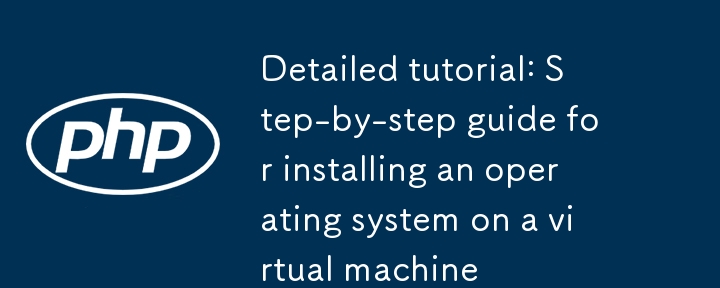

Installation process
1. Create a virtual machine

2. Select the typical recommended configuration and click Next

3. Select to install the operating system later and click Next

4. Select the operating system, select the version, and then select Next

5. Name the virtual machine (the name displayed on the side of the vm), select the installation location, and then click Next

6. Set the virtual machine C drive size. Install win7 on Linux system, select the default configuration (if you want to improve the C drive performance, you can select "Save virtual C drive as a single file"), and then click Next

7. Display the previous settings summary, click Finish

8. Select the virtual machine, click Edit Virtual Machine Settings, and set up the virtual machine

9. Memory settings can be set according to the memory size of your laptop. The default is 1G

10. Set the processor

11. 画像ファイルを選択して「OK」をクリックします

12. クリックして仮想マシンを起動します

13. 最初のオプションを選択してシステムをインストールします


14. インストールプロセス Linux システムのインストール方法 インストール後、[インストールが完了しました] をクリックします。




 17. kdump を設定して無効にすると、システムがクラッシュしたときに役立つ情報を取得できるため、通常は設定する必要はありません。実稼働環境で有効になります
17. kdump を設定して無効にすると、システムがクラッシュしたときに役立つ情報を取得できるため、通常は設定する必要はありません。実稼働環境で有効になります
 18. ネットワークをセットアップし、イーサネットをオンにすると、システムが手動で設定されます
18. ネットワークをセットアップし、イーサネットをオンにすると、システムが手動で設定されます
 19. クリックしてインストールを開始します
19. クリックしてインストールを開始します


20. インストールプロセス中に、パスワードを設定して新しいユーザーを追加できます
21. インストールが完了したら、[再起動]をクリックします。

Linux システムのインストール方法 のインストールが完了したら、ネットワークが接続されているかどうかの確認、yum ソースの変更、いくつかのソフトウェアのインストールなど、いくつかの検出と構成を行う必要があります。
質問:インストール完了後に ifconfig が見つからない場合は?
一部の Linux システムには、デフォルトでは net-tools がインストールされていません。インストールするには、yuminstallnet-tools を使用するだけです。
まとめ
インストールプロセス全体は、ステップバイステップの操作に従うだけで、ビデオメモリのサイズやプロセッサコアの数などを設定する必要があるということです。あなたの実際の状況。
終了
The above is the detailed content of Detailed tutorial: Step-by-step guide for installing an operating system on a virtual machine. For more information, please follow other related articles on the PHP Chinese website!




